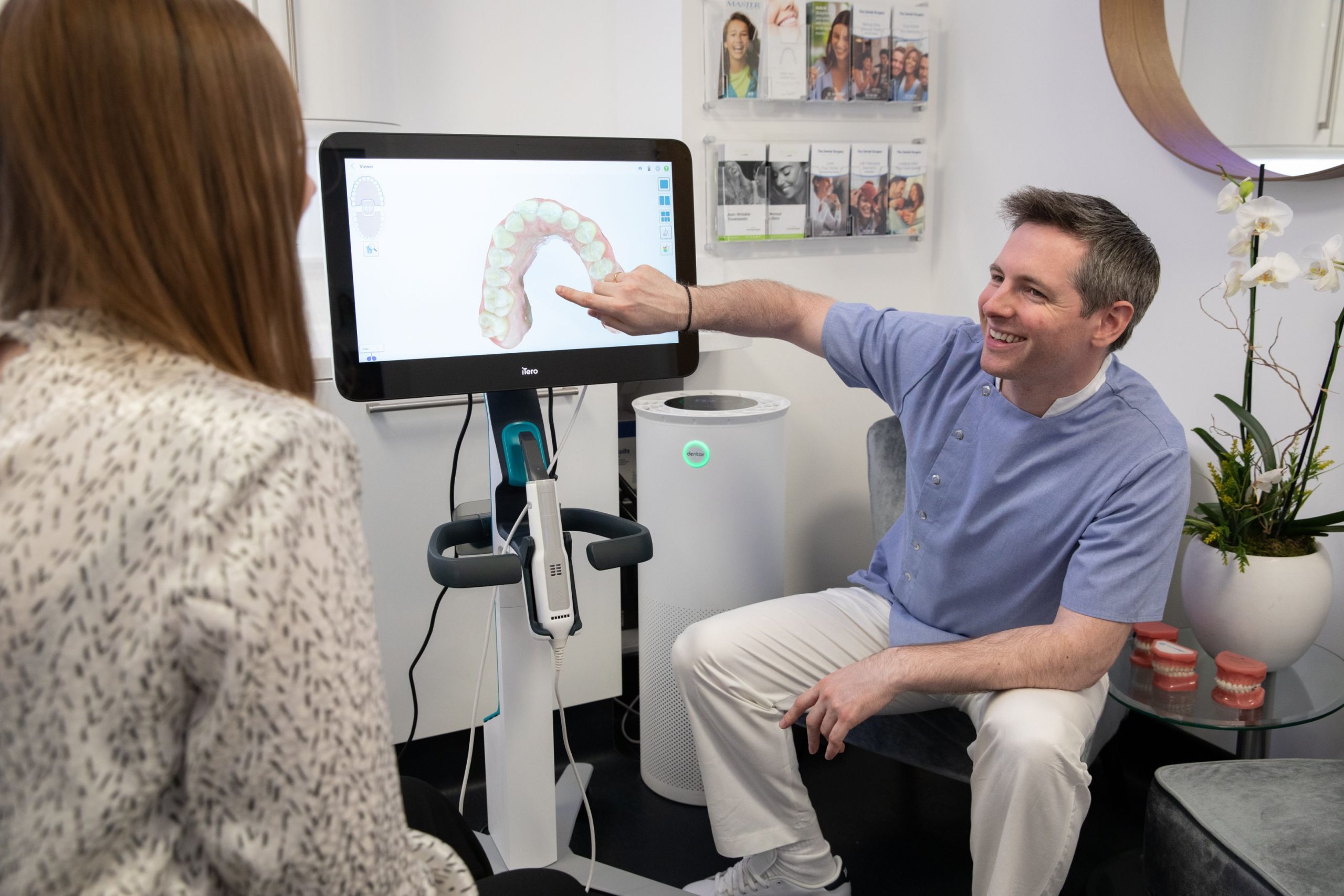- Categorised as:
- Periodontics
- Dental Hygiene
Can Gum Disease Be Reversed?
Nearly all of us have gum disease – that was the headline of a piece published by Birmingham University’s School of Dentistry in 2015.
They claim that 90% of UK adults have some degree of gum disease.
Looking in greater depth, research by the Centre of Disease Control and Prevention in the United States found that half of all US adults have some degree of gum disease.
Clearly, whether it is closer to half or 90%, that’s a huge number of adults.
This poses the question – what can be done about it? Can gum disease be treated and, if most people have it, is it really that bad?
Sadly, safety in numbers doesn’t have medical significance. The percentage of people who may or may not have gum disease does nothing to alter its impact on those who do show the symptoms.
What the basic statistics don’t show though is how many people have gingivitis, essentially the very early stages of gum disease, and how many have more advanced gum disease or, to give it its proper name, periodontitis.
The answer to the question of whether it can be reversed lies in how far the gum disease has progressed.
Gingivitis
Gingivitis is inflammation of the gums caused by a film of plaque, or bacteria, which has accumulated on the teeth. This is the first stage of gum disease.
Gingivitis presents itself in a number of common symptoms, these include:
- Bleeding gums
- Swollen/inflamed or red gums
- Bad breath
- Heavy tartar build-up
- Sensitive teeth
Of course, the presence of some or all of these symptoms does not mean a person definitely has gingivitis, neither does the absence of any one of them rule out the presence of gingivitis.
To use an example, smokers are more susceptible to gum disease than non-smokers and yet the symptom of bleeding gums can be absent because smoking reduces the blood supply to the gums.
Some people with chronic gingivitis may also not exhibit the symptoms listed above and incorrectly assume they are not at risk.
Gingivitis is reversible and tackling the gum problem at this stage is of prime importance because – and here’s a spoiler alert – if it progresses to periodontitis the damage is irreversible.
Gingivitis can be kept at bay by following good oral hygiene, though this isn’t to imply that having gingivitis is a sign someone has neglected their teeth, the fact it is so common demonstrates just how difficult it is to avoid.
Brushing and flossing alone will not remove gingivitis once it has set in, you need to pair a thorough home routine with professional treatment. Seeing a hygienist and maintaining regular appointments is the most effective and safest way to completely treat gingivitis (your hygienist will tell you how often you need to have treatment, dependent on your own oral health).
The likelihood of it returning can be reduced by making sensible changes to diet – avoiding sugary and acidic food and drink where possible for instance, and also, if possible, quitting or cutting back on smoking.
If you have noticed any of the symptoms mentioned above the starting point will be to see a dentist for an examination of your mouth, teeth and gums.
It is impossible to know if you have gingivitis or periodontitis without seeing a professional. They will then advise whether you need to see a hygienist or periodontist.
A periodontist is a dentist who specializes in the prevention, diagnosis and treatment of periodontal disease.
What if I don’t treat my gingivitis?
Left untreated, not only can gingivitis progress to periodontitis and subsequent bone loss, but the plaque and inflammation from gingivitis can result in bacteria entering the bloodstream and having a negative effect on your overall health.
Periodontitis
If gingivitis is treated, the health of gums will be restored and long-term damage to the bone levels around your teeth prevented.
However, and it’s a big however, should it advance to periodontitis then the condition becomes irreversible (though it is manageable).
With periodontitis, the symptoms of gingivitis persist, but the inflammation worsens to an extent whereby the alveolar bone holding the teeth in place begins to deteriorate.
Once bone has been lost it cannot regrow, this can lead to teeth becoming loose and ultimately teeth falling out or requiring extraction.
Both gingivitis and periodontitis also have other potentially serious health consequences. Their presence has been linked to an increased risk of heart disease and diabetes as well as problems affecting pregnancy.
It’s important to emphasize that inflammation of the gums, even without bone loss, puts people at an equal risk of these health conditions.
There is no set path from gingivitis to periodontitis; gingivitis will always precede periodontitis but gingivitis will not always become periodontitis. As with almost every medical condition, lifestyle and genetics will play a huge role.
Anyone who has or suspects they might have periodontal issues should see a dentist and hygienist as soon as possible so that a diagnosis can be made and treatment started to control the disease and limit future or further damage. If your family have a history of gum disease you are at an increased risk of developing it too.
Treatment for periodontitis is life long as this disease cannot be cured, but can be controlled with a high standard of oral hygiene at home and regular professional treatment.
Next Steps – See a Dentist and Hygienist!
With the symptoms for gingivitis and periodontitis so similar, it is often impossible for any potential sufferer to know which of the two they have (if either).
Since neither can be remedied at home alone, it is important to arrange an appointment with a dentist and hygienist to have the teeth and gums assessed and remedial action taken as required.
All of our dental hygienists in London are skilled in assessing the health of gums and providing unparalleled treatment. The prevalence of gum disease means it is a condition they treat daily so there is no need for embarrassment in having gum problems. With up to 90% of adults similarly affected you are not in a minority!
If you have been referred to see a periodontist by your current dentist or hygienist, you can also see our periodontist.
Book an appointment online or give us a call.
Do you have a specific question?
Get in touch with us today.



